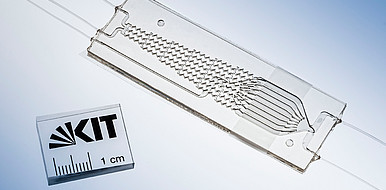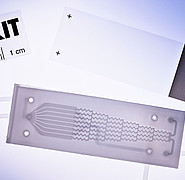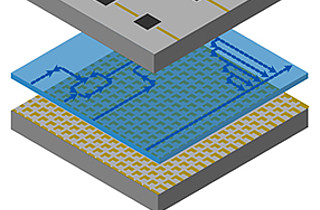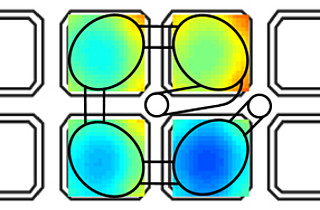Parallel stem cell examination
Stem cells are attributed an enormous potential for medical research. Although it is possible nowadays to differentiate stem cells in vitro specifically into various different cells, research is still faced with numerous problems. The chip is particularly suitable for laboratory use. Besides studies of stem cell differentiation, the microfluidic chip can be used also for other long-time studies of cells, provided that the cells are to be tested for different concentrations of a liquid or soluble substance. Another possibility are parallel long-time drug tests in cells.
State of the art
For instance, not all cells can be differentiated in the same way. As a consequence, the differentiated cells as a rule are not available in a pure form but are permeated by undifferentiated cells. After transplantation into a living organism, these undifferentiated cells begin to differentiate in an uncontrolled way, which produces germ cell tumor, so-called teratoma.
Technology
A microfluidic chip from the Institute of Microstructure Technology (IMT) now allows long-time experiments to be performed to analyze the influence of soluble factors on stem cell differentiation. The polycarbonate material, which is capable of mass production, and the multilayer design of the chip make it distinctly different from previous solutions. The chip has two microfluidic circuits separated by a membrane. One circuit is subdivided into eight channels, where the stem cells are contained in a nutrient solution. In the second circuit, soluble factors, such as various morphogens, can be entered through two feed ducts and distributed to eight channels by means of an automated mixer. Each channel subsequently contains a different concentration of the mix, which can be computed. The soluble factors diffuse through the perforated membrane separating the two circuits. Consequently, the cells contact the soluble factors only from below and are not completely surrounded by them. During the experiment, the cells can be observed in the closed chip under a fluorescence microscope. In addition, it is possible to incubate the chip during the experiment.
Advantages
The chip is particularly suitable for laboratory use. Besides studies of stem cell differentiation, the microfluidic chip can be used also for other long-time studies of cells, provided that the cells are to be tested for different concentrations of a liquid or soluble substance. Another possibility are parallel long-time drug tests in cells.
Options for companies
The IMT is looking for partners for industrial production of the chip.
Your contact person for this offer

Innovation Manager Karlsruhe Institute of Technology (KIT)
Innovation and Relations Management (IRM) Phone: +49 721 608-25587
Email: rainer.koerber@kit.edu




